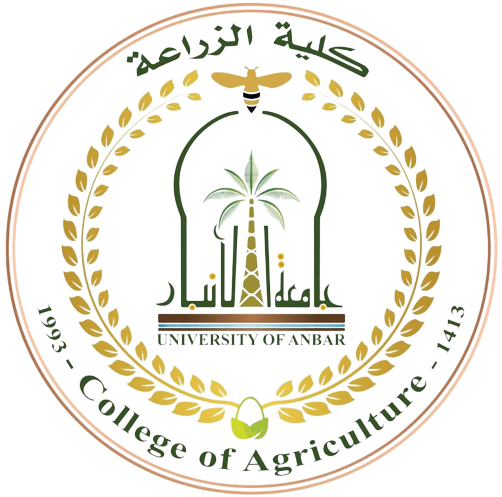Environmental potential of cotton plant
Assistant Professor Dr. Abdul Samad Hashim Noman
Professor of Fiber Technology at Anbar University
Department of Field Crops - College of Agriculture
August 2025
Cotton (Gossypium hirsutum L.) cultivation is no longer limited to its economic importance as a globally important industrial crop. It is also used for other important purposes. The fibers of this crop are used as a raw material in many industries, such as the spinning and weaving industry, where they constitute 85-90% of global fiber production. Fibers represent approximately 35% of the weight of cottonseed. Its seeds are also a source of important vegetable oils, which are used in some industries, ranging from 18-26% of the seed weight. In addition, its seed meal can be used in animal feed production, as it contains 32-36% protein. This crop is used for its excellent growth characteristics in the bioremediation of soils contaminated with various harmful environmental pollutants, and as a carbon reservoir to combat climate change. The increase in population has led to urban and industrial expansion, which has increased pressure on the environment in terms of water consumption and the increase of various pollutants, such as heavy metals. Pollution also affects soil structure and health, as it contains diverse microorganisms that provide nutrients to plants. Therefore, soil pollution is a major environmental concern due to the spread of industrial and urban waste resulting from human activities. Another source of pollution is the misuse of agricultural practices, such as the excessive use of mineral fertilizers and pesticides without following scientific methods. Wars also have a negative impact by increasing the risk of pollution in war-torn areas. One of the main risks of pollutants is their impact on human health through their entry into the food chain, whether via plants or animals. Carbon emissions contribute to climate change, which has dire consequences for various ecosystems. Carbon gases constitute more than 80% of greenhouse gases, trapping solar energy in the atmosphere. This, in turn, raises the planet's temperature, affecting the timing of planting, growth, and productivity of agricultural crops. One of the main causes of carbon emissions into the atmosphere is the large number of vehicles (private cars and transportation vehicles), which have increased significantly in the past five years. In addition, emissions from private and government factories have also increased in Iraq. Overall, coal contributes 43% of carbon emissions to the atmosphere, followed by the oil sector at 36%, and natural gas at 20%. It's worth noting that cement manufacturing, for example, releases approximately 900 kilograms of carbon dioxide into the atmosphere for every ton of cement. Steel production also causes significant emissions, and the petrochemical industry also plays a significant role in carbon release. Important sources that cannot be overlooked are increased deforestation and urban sprawl in agricultural areas, which in turn reduce carbon absorption from the atmosphere. Based on the above, it is clear that pollution in all its forms and increased carbon emissions are among the biggest challenges facing natural systems, requiring sustainable and nature-friendly solutions. Phytoremediation, therefore, emerges as an innovative and sustainable solution that takes advantage of the ability of some plants to absorb pollutants. This makes it an environmentally friendly and less expensive natural means of purifying the environment without the need for extensive chemical interventions. Plants are distinguished by their ability to improve air quality and produce oxygen. Furthermore, some plant species possess a unique ability to absorb heavy metals and trace elements from soil and water, then store them within their tissues or convert them into less harmful compounds. This process relies on complex biological mechanisms, making plants an effective natural tool for removing environmental pollutants. This, in turn, achieves the thirteenth goal of the United Nations' Sustainable Development Goals (Climate Action). The importance of the cotton plant lies in its deep taproots and large biomass, in addition to its long growth period in the field, which can reach eight months. This makes it one of the most suitable plants for phytoremediation. Studies have shown that cotton plants can tolerate high concentrations of heavy metals, especially cadmium, and store the metals within their tissues without entering the food chain, making it an environmentally and economically viable option for biologically treating polluted soil. In addition to adopting multiple bioremediation methods, we can mention:
- Phytoextraction, in which the plant accumulates pollutants in the vegetative system.
- Rhizofiltration, in which the plant removes pollutants from water.
- Potabilization, in which the movement of pollutants in the soil is reduced.
- Phytodegradation, in which organic compounds are broken down into harmless or less harmful compounds using enzymes.
- Phytovolatilization, in which some pollutants are converted into less harmful gases.
Thanks to the large biomass of cotton plants (vegetative and root mass), its long growing season, and its ability to grow in a wide range of soils, tolerating drought, heat, and salinity. Furthermore, it can be used in crop rotations and intercropping systems, making it a prominent crop that can be used as a carbon sink and store it in its tissues. Therefore, cotton plants can contribute to mitigating carbon emissions and supporting environmental balance, in line with the Sustainable Development Goals. In addition to its important role in the ecosystem, cotton cultivation is receiving significant global attention for its transition to more sustainable practices, such as integrated disease and pest management, modern irrigation techniques, and organic farming.
